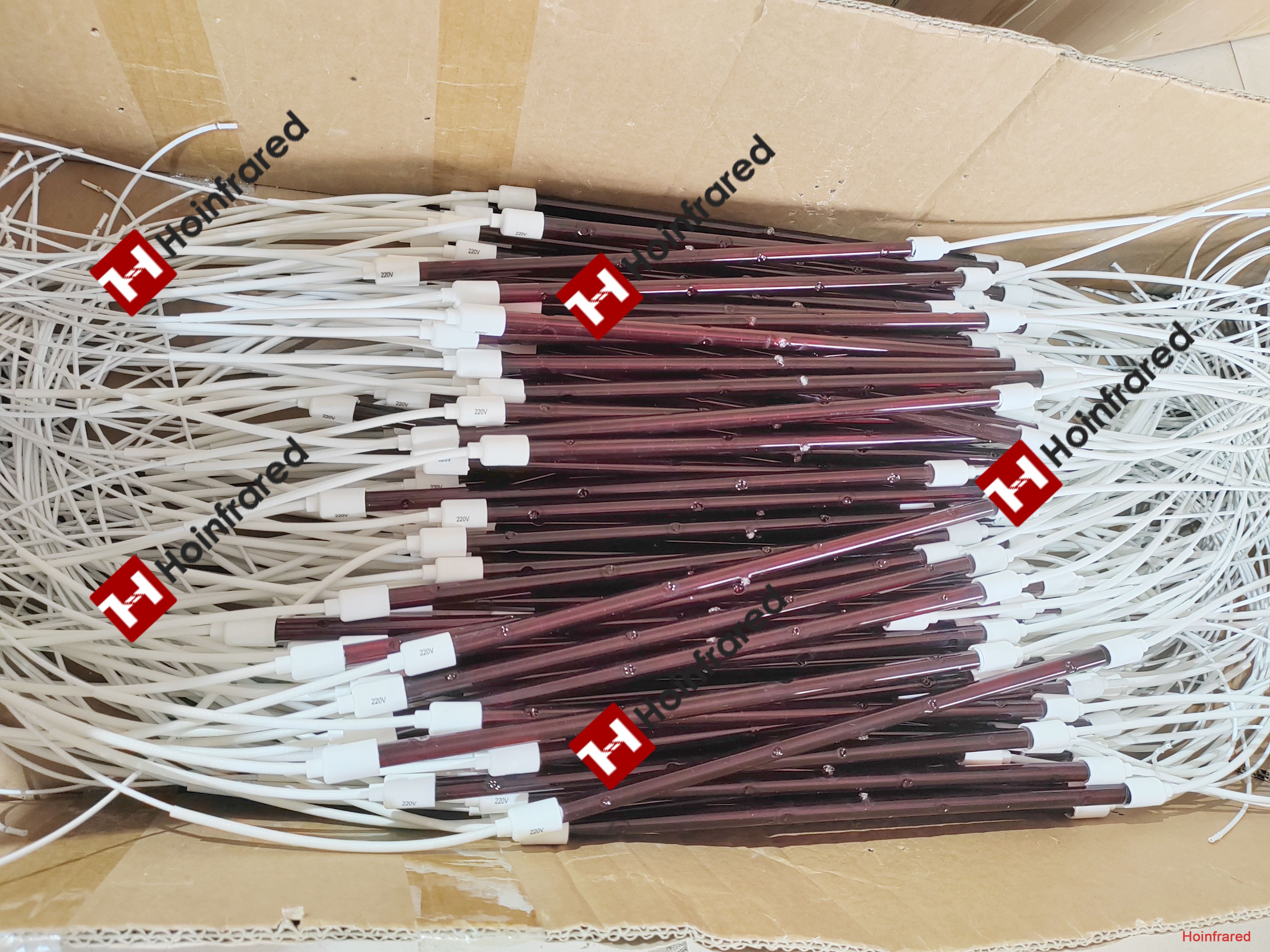
Infrared heating for drying leather has the advantages of high efficiency and energy conservation. Usually, a drying tunnel composed of multiple infrared lamps is used, and the leather slowly passes through the tunnel. For larger leather pieces, the number of infrared lamps can be increased or the power can be raised.
Principle of infrared heating:
Infrared is an electromagnetic wave with a wavelength range of 0.75 micrometers to 1 millimeter. When infrared irradiates leather, the molecules in the leather absorb the energy of infrared, intensifying molecular movement and generating heat to achieve the heating purpose.
Infrared lamps have various applications in the leather industry, mainly including the following aspects:
(1) Drying
After leather undergoes tanning, dyeing and other processing, it needs to remove excess moisture. The infrared generated by infrared lamps can penetrate a certain depth into the leather, causing the internal moisture to quickly absorb heat and transform into water vapor, accelerating the drying process and ensuring uniform drying. This effectively avoids problems such as cracking and deformation on the leather surface due to local overheating or excessive drying speed.
(2) Fixing color
After leather dyeing, heating treatment with infrared lamps can make dye molecules better combine with leather fibers, thereby improving the fastness and uniformity of dyeing, making the leather color more vivid and lasting.
(3) Softening
For some harder leather, the heat from infrared lamps can intensify the movement of leather fiber molecules, making the leather softer and increasing its flexibility and plasticity, which is convenient for subsequent processing such as cutting and sewing.
(4) Sterilization and disinfection
The heat generated by infrared lamps can kill bacteria, mold and other microorganisms on the leather surface to a certain extent, helping to improve the hygiene quality of leather and prevent it from molding and deteriorating due to microbial growth during storage and use, thus extending the service life of leather.
The entire leather production process is very complex, and the drying of leather is a very important step. Quartz infrared heaters have been proven to be very effective for leather drying and have several significant advantages over traditional methods.
The following are the main features and advantages of using high-efficiency infrared heaters for leather drying:
(1) Rapid drying process
Compared with traditional steam hot air convection and heat conduction dryers, the use of high-efficiency infrared heaters can significantly accelerate the drying process. The energy of infrared heaters is directly transferred to the leather surface without the need for an intermediate medium. Some heaters can penetrate the leather's capillary pores, with a penetration depth of 0.1 to 2.0 millimeters. The infrared energy inside the capillary pores is almost completely absorbed after multiple reflections off the pore walls, achieving extremely high heat transfer efficiency. For the same leather, using infrared heaters for drying can greatly reduce the drying time.
(2) High-quality drying
The drying quality of quartz infrared heaters is outstanding. Since both the surface and inner layers of the leather simultaneously absorb far-infrared heaters, the drying process is uniform, thereby improving the physical properties and color of the dried leather. For example, in leather goods manufacturing, maintaining uniform drying is crucial for ensuring the quality and appearance of the final product.
(3) Energy saving
Compared with other heaters and electric heating drying methods, quartz infrared heaters are more energy-efficient for drying. They can save over 50% of the conventional energy consumption. Additionally, the infrared heating elements in these dryers have a simple structure, reducing the equipment size, making operation more convenient and enhancing safety.
Notes:
uInfrared heating equipment should be regularly maintained and calibrated to ensure uniform and stable heating.
uAccording to the type, thickness and processing requirements of the leather, the heating temperature, time and distance should be precisely controlled to avoid leather damage due to overheating.
uWhen operating infrared heating equipment, operators should wear protective glasses to prevent infrared rays from causing eye damage.
Special Infrared Heating Lamp IR heating tube can be customized into a variety of different shapes to meet the requirements of different industrial environment......
Ozone free Quartz Tubing, clear cut surface slight purple. The product blocks wave length <220nm. Which transit over 70% in 253.7nm. Good for all kinds of ge......